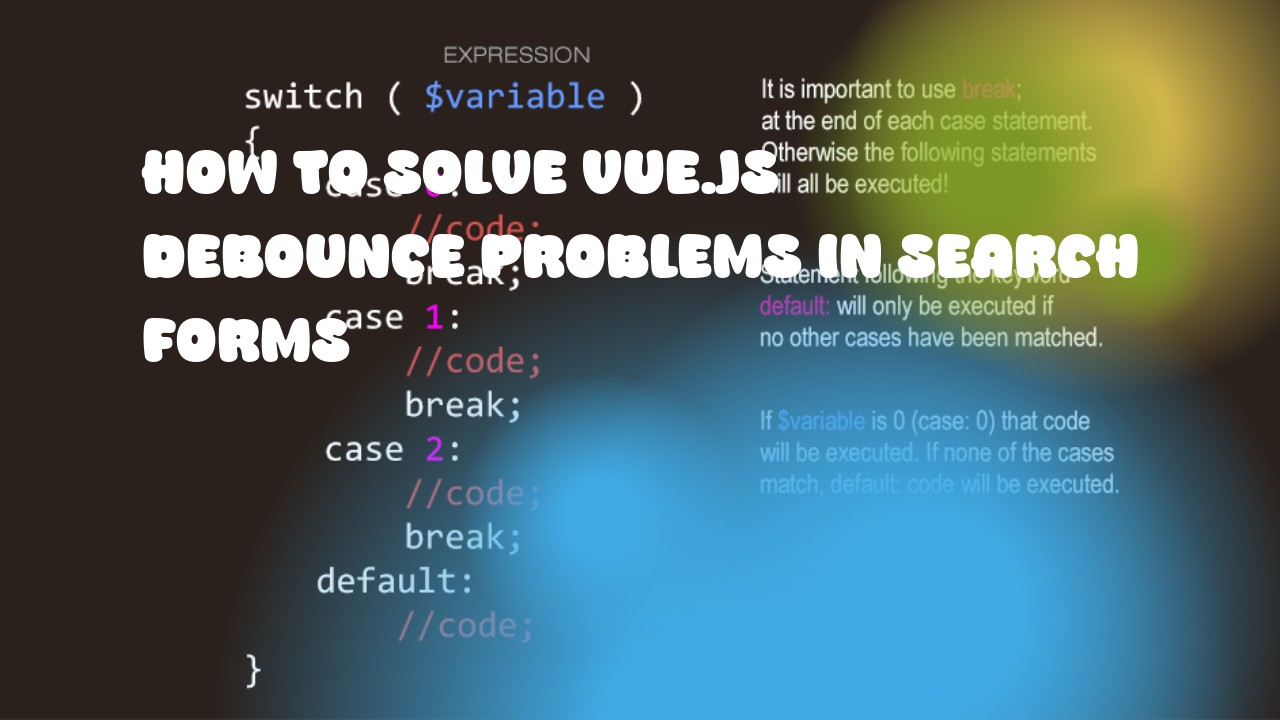Solving debounce problems in search forms can be essential for improving the performance of your application, especially when dealing with real-time data fetching or other operations that need to be throttled and not run too often. Below is an example code snippet demonstrating how you can implement a Vue.js solution using lodash's debounce function to handle this.
// import the debounce function from lodash
import { debounce } from 'lodash';
export default {
data() {
return {
query: '',
results: [],
};
},
methods: {
fetchResults(query) {
// make API call to fetch results based on query
this.results = []; // reset the results array before fetching new data
// simulate an asynchronous operation (replace with actual API call)
setTimeout(() => {
const filteredResults = this.fakeData.filter(result => result.includes(query));
this.results = filteredResults;
}, 1000);
},
// create a debounced version of the fetchResults method
debouncedFetchResults: debounce(function(query) {
this.fetchResults(query);
}, 300), // set the delay to 300ms
},
watch: {
// watch the query for changes and call the debounced function
query: {
handler(newValue, oldValue) {
if (newValue !== oldValue) {
this.debouncedFetchResults(newValue);
}
},
immediate: true, // execute on component creation
},
},
};
In this example, we have a search input field that triggers the fetchResults method whenever the user types something. However, if they continue typing for more than 300ms (our debounce delay), then the fetchResults method is called only once with the latest query value. This significantly improves performance by preventing multiple requests from being sent when the user is still typing, especially in case of slow connections or network latency.
To use this example, you would first install lodash using npm:
npm install lodash
Then, you can include it in your Vue component as shown above. The fetchResults method simulates an API call by filtering a static array of fake data based on the query. You would replace this with your actual API call.

